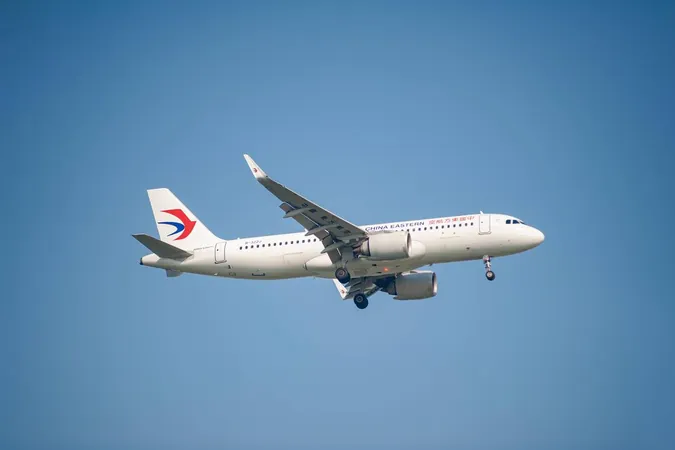
Changi Airport's Close Call: Two China Eastern Airlines Planes Nearly Collide on Runway
2025-08-20
Author: Wei Ling
A Dangerous Miscommunication in the Skies
In a startling incident at Changi Airport in August 2024, air traffic control procedures went awry when pilots of a China Eastern Airlines aircraft disregarded an urgent instruction to abort their landing. As it turns out, another plane from the same airline had just landed seconds earlier, creating a potentially disastrous situation.
The incident was categorized as a runway incursion when a plane that was still on the runway posed an obstruction for following traffic. This unsettling event was highlighted in a Transport Safety Investigation Bureau (TSIB) report released on August 1, 2025.
How It All Unfolded
Both planes involved in the emergency were traveling from Shanghai Pudong International Airport. The first aircraft, an Airbus A320-200neo, touched down on Runway 20R just after 8:12 PM. Hoping to streamline operations, the air traffic controller instructed the crew of this plane to expedite their exit from the active runway.
The first crew executed a left turn toward a rapid exit taxiway but did so at a reduced speed, hindering their timely clearing of the runway. Just as the second plane, a Boeing 777-300ER, was granted permission to land, alarms indicated that the first aircraft was still on the runway.
Critical Moments on the Runway
At 8:13 PM, with the second plane already on its final approach, the air traffic controller realised that the first aircraft was not going to clear the runway in time. He promptly instructed the second aircraft to initiate a go-around maneuver. However, the crew of the second plane did not hear this crucial command and proceeded to land—with terrifying timing.
They touched down just 38 seconds after the controller's warning, completely unaware of the looming danger.
Lessons Learned and Safety Improvements
Fortunately, the incident concluded without injury or damage to either aircraft, which subsequently parked safely at their designated gates. The investigation suggested that the cockpit alarms from the second plane likely obscured the controller's voice, leading to the disconnect.
To prevent such dangerous miscommunication in the future, the Civil Aviation Authority of Singapore (CAAS) has revamped its training protocols for air traffic controllers, emphasizing the importance of clear communication and situational awareness in high-stakes environments.
Moreover, China Eastern Airlines has reinforced the need for its pilots to remain vigilant, as runway incursions can occur rapidly and unexpectedly. The airline reminded its flight crews of the importance of complying with go-around instructions—no matter the situation.
A Cautionary Tale for Aviation Safety
Aviation experts are ringing alarm bells about the need for heightened communication between flight crews and air traffic controllers, especially during critical landing phases. Michael Daniel, managing director at Aviation Insight, warns that miscommunication can lead to catastrophic consequences, urging pilots to adhere to visual inspections during landings.
In the world of aviation, where precision and clarity are paramount, this incident at Changi Airport serves as a stark reminder of the potential risks that lurk in the skies.
 Brasil (PT)
Brasil (PT)
 Canada (EN)
Canada (EN)
 Chile (ES)
Chile (ES)
 Česko (CS)
Česko (CS)
 대한민국 (KO)
대한민국 (KO)
 España (ES)
España (ES)
 France (FR)
France (FR)
 Hong Kong (EN)
Hong Kong (EN)
 Italia (IT)
Italia (IT)
 日本 (JA)
日本 (JA)
 Magyarország (HU)
Magyarország (HU)
 Norge (NO)
Norge (NO)
 Polska (PL)
Polska (PL)
 Schweiz (DE)
Schweiz (DE)
 Singapore (EN)
Singapore (EN)
 Sverige (SV)
Sverige (SV)
 Suomi (FI)
Suomi (FI)
 Türkiye (TR)
Türkiye (TR)
 الإمارات العربية المتحدة (AR)
الإمارات العربية المتحدة (AR)